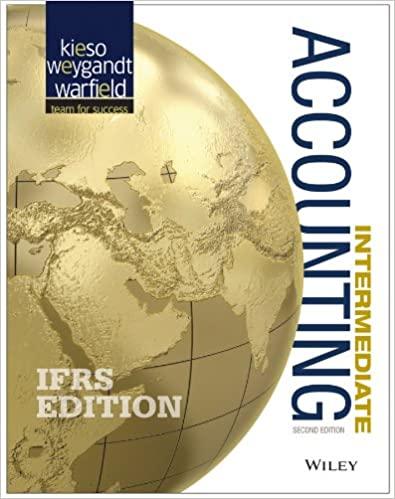Financial Statement Analysis Cases Case 1: Bankruptcy Prediction The Z-score bankruptcy prediction model uses statement of financial
Question:
Financial Statement Analysis Cases Case 1: Bankruptcy Prediction The Z-score bankruptcy prediction model uses statement of financial position and income information to arrive at a Z-Score, which can be used to predict financial distress:
![]()
EBIT is earnings before interest and taxes. MV equity is the market value of equity, which can be determined by multiplying share price by shares outstanding.
Following extensive testing, it has been shown that companies with Z-scores above 3.0 are unlikely to fail; those with Z-scores below 1.81 are very likely to fail. While the original model was developed for publicly held manufacturing companies, the model has been modified to apply to companies in various industries, emerging companies, and companies not traded in public markets.
Instructions
(a) Use information in the financial statements of a company like Vodafone (GBR) or Nokia (FIN) to compute the Z-score for the past 2 years.
(b) Interpret your result. Where does the company fall in the financial distress range?
(c) The Z-score uses EBIT as one of its elements. Why do you think this income measure is used?
Case 2: P/E Ratios One of the more closely watched ratios by investors is the price/earnings or P/E ratio. By dividing price per share by earnings per share, analysts get insight into the value the market attaches to a company’s earnings.
More specifically, a high P/E ratio (in comparison to companies in the same industry) may suggest the shares are overpriced. Also, there is some evidence that companies with low P/E ratios are underpriced and tend to outperform the market. However, the ratio can be misleading.
P/E ratios are sometimes misleading because the E (earnings) is subject to a number of assumptions and estimates that could result in overstated earnings and a lower P/E. Some analysts conduct “revenue analysis”
to evaluate the quality of an earnings number. Revenues are less subject to management estimates and all earnings must begin with revenues. These analysts also compute the price-to-sales ratio (PSR 5 price per share 4 sales per share) to assess whether a company is performing well compared to similar companies. If a company has a price-to-sales ratio significantly higher than its competitors, investors may be betting on a company that has yet to prove itself. [Source: Janice Revell, “Beyond P/E,” Fortune (May 28, 2001), p. 174.]
Instructions
(a) Identify some of the estimates or assumptions that could result in overstated earnings.
(b) Compute the P/E ratio and the PSR for Puma (DEU) and adidas (DEU) for 2012.
(c) Use these data to compare the quality of each company’s earnings.
Step by Step Answer:

Intermediate Accounting IFRS Edition
ISBN: 9781118443965
2nd Edition
Authors: Donald E. Kieso, Jerry J. Weygandt, Terry D. Warfield





